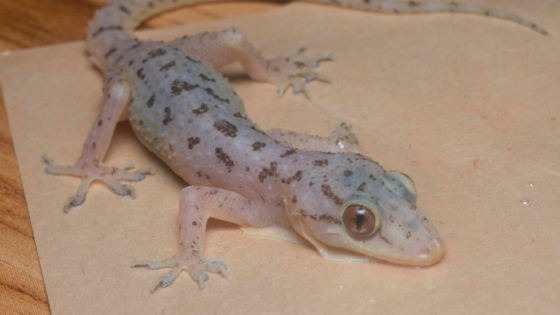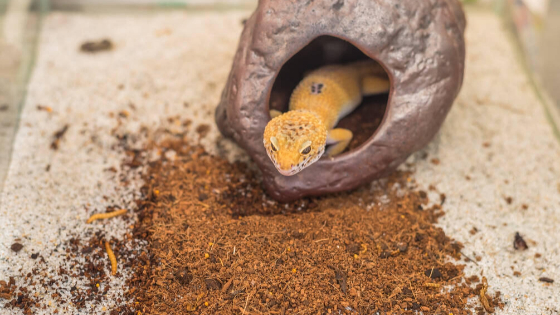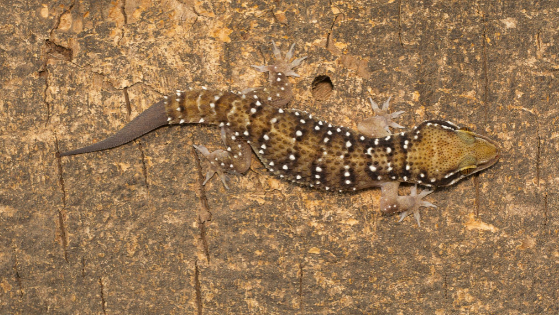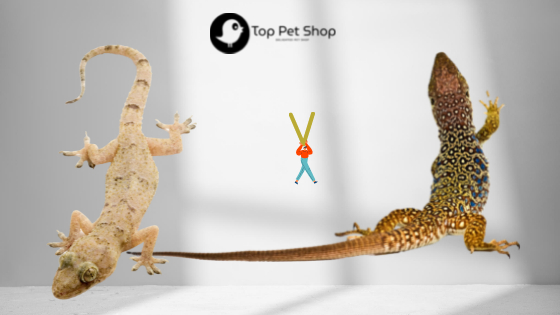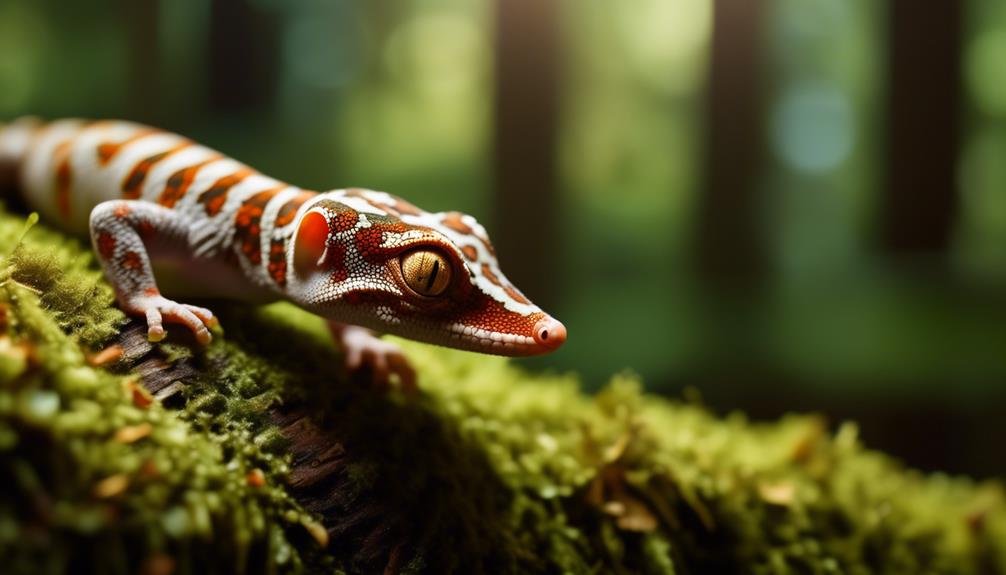
Madagascar, known for its unique and diverse wildlife, is home to a remarkable species of gecko, the Mocquard’s Madagascar ground gecko. This small reptile, with its slender body and adhesive toe pads, has adapted perfectly to the dry deciduous forests and rocky areas of its habitat.
However, despite its current classification as ‘Least Concern’ on the IUCN Red List, the future of this endangered gecko remains uncertain. The main threat to its survival lies in the extensive deforestation occurring in Madagascar, leading to the loss of its natural habitat.
In this discussion, we will explore the challenges faced by this gecko and the urgent need for conservation efforts to ensure its long-term survival.
Key Takeaways
- Mocquard’s Madagascar ground gecko is a species of gecko endemic to Madagascar.
- It is primarily found in the western and southwestern regions of the country, inhabiting dry deciduous forests and rocky areas.
- The gecko is nocturnal and has adapted to the arid conditions of its habitat.
- While currently listed as ‘Least Concern’ on the IUCN Red List, habitat loss due to deforestation poses a potential threat to its long-term survival.
Taxonomy and Classification
Mocquard’s Madagascar ground gecko, scientifically known as Paroedura mocquardi, belongs to the family Gekkonidae and is classified under the genus Paroedura. This small gecko species is endemic to Madagascar, primarily found in the western and southwestern regions.
It inhabits dry deciduous forests and rocky areas, adapting well to the arid conditions of its habitat. Mocquard’s Madagascar ground gecko has a slender body with a flattened appearance, measuring around 8-9 centimeters in length. It displays a brown or grayish coloration with irregular patterns and has large eyes with vertical pupils.
With adhesive toe pads, it can climb on various surfaces. This species is primarily insectivorous, feeding on small invertebrates, and is known to be a sit-and-wait predator. Although currently listed as ‘Least Concern’ on the IUCN Red List, habitat loss due to deforestation poses a potential threat to its long-term survival.
Physical Description
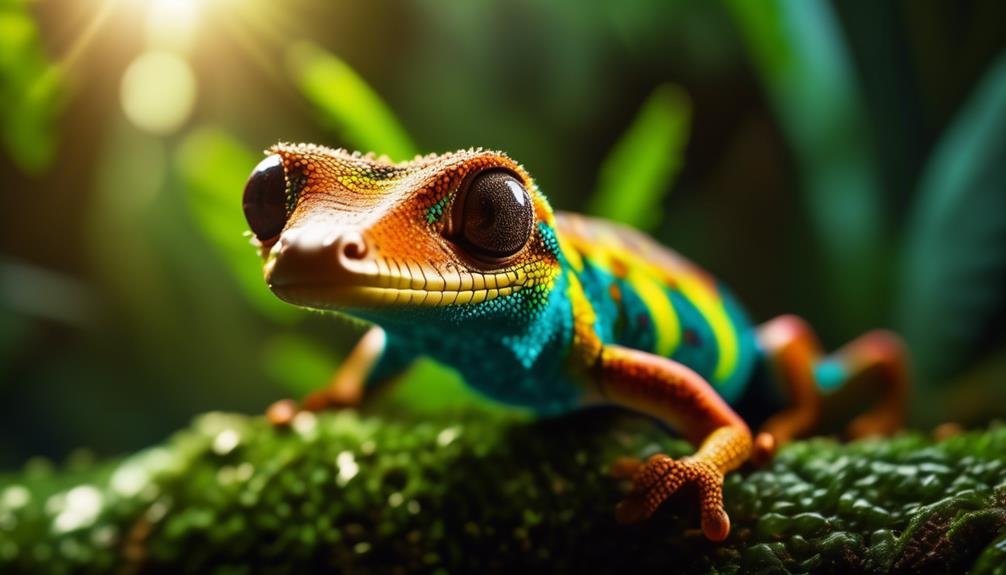
The Mocquard’s Madagascar ground gecko possesses a small size, typically reaching lengths of 8-9 centimeters. It has a slender body with a flattened appearance.
The gecko showcases a brown or grayish coloration with irregular patterns. Its large eyes with vertical pupils add to its distinctive features. The Mocquard’s Madagascar ground gecko also has adhesive toe pads, enabling it to climb on various surfaces.
These characteristics make the gecko well-suited for its habitat in Madagascar’s dry deciduous forests and rocky areas. Its physical attributes allow it to camouflage and blend into its surroundings, aiding in its survival.
This small gecko’s unique physical traits set it apart and contribute to its overall adaptability and resilience.
Habitat and Distribution
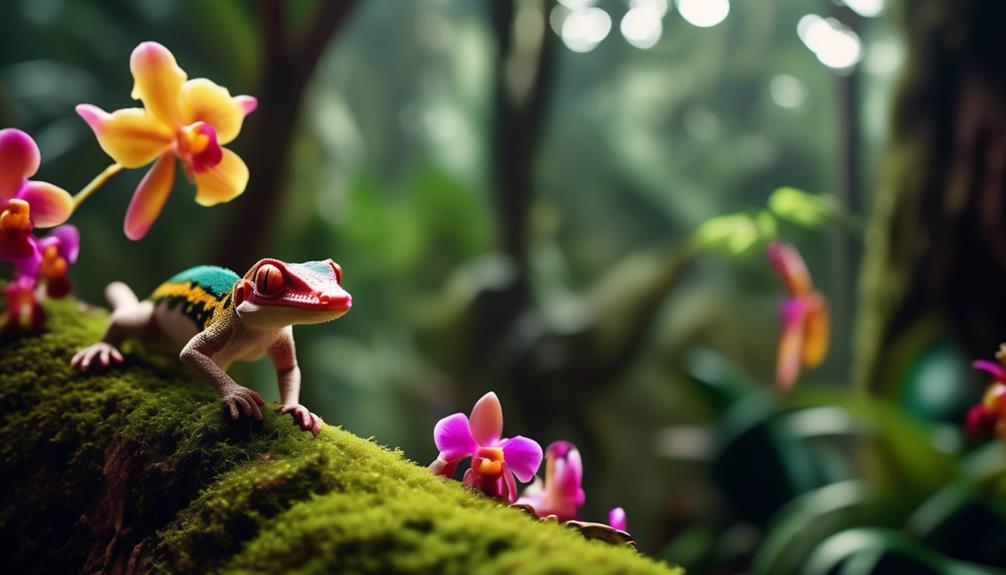
Mocquard’s Madagascar ground gecko is primarily found in the western and southwestern regions of Madagascar. It inhabits dry deciduous forests and rocky areas, where it can find suitable hiding spots during the day. The gecko is well-adapted to the arid conditions of its habitat and is known to occur at elevations ranging from sea level to around 500 meters.
Being a nocturnal species, it emerges at night to hunt for small invertebrates. Despite its relatively wide distribution, habitat loss due to deforestation poses a potential threat to its long-term survival. Currently, Mocquard’s Madagascar ground gecko is listed as ‘Least Concern’ on the IUCN Red List, but further research and monitoring are necessary to fully understand its population status and conservation needs.
Behavior and Diet
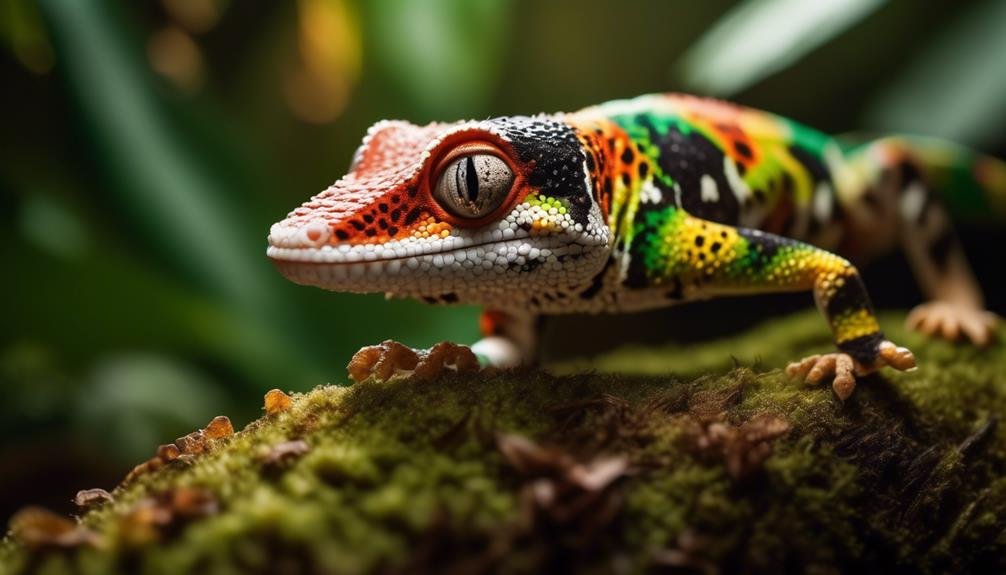
The behavior and diet of the Mocquard’s Madagascar ground gecko are key aspects to understanding its ecological niche and survival strategies.
This secretive and mostly terrestrial species is primarily insectivorous, feeding on a variety of small invertebrates. It is known to be a sit-and-wait predator, ambushing its prey. The gecko has the ability to shed its tail as a defense mechanism. These behavioral adaptations allow it to efficiently hunt and avoid predators in its native habitat of dry deciduous forests and rocky areas.
By consuming a diverse range of invertebrates, the gecko plays an important role in maintaining the ecological balance of its ecosystem.
Understanding the behavior and diet of the Mocquard’s Madagascar ground gecko is crucial for its conservation and ensuring its long-term survival.
Conservation Status
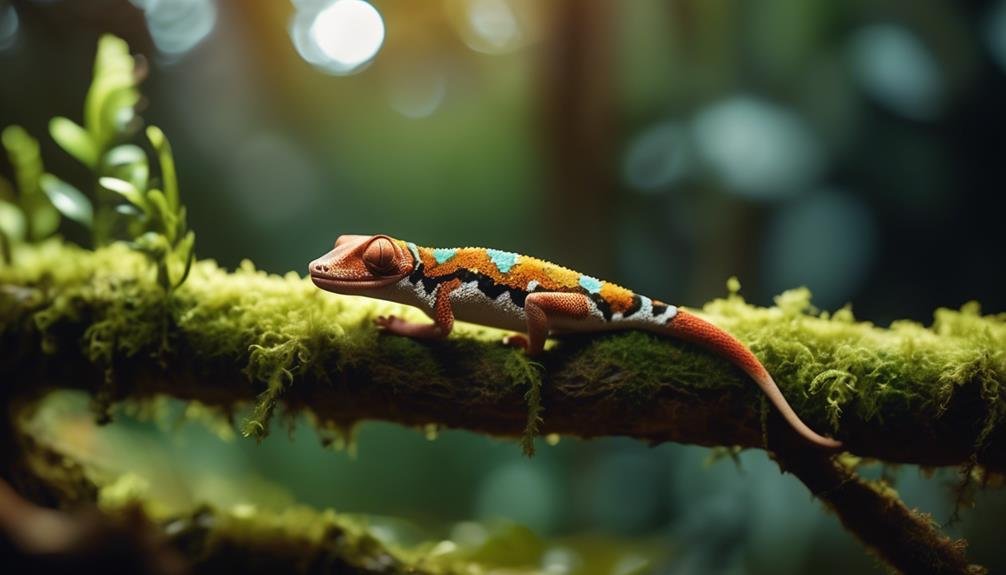
Listed as ‘Least Concern’ on the IUCN Red List, the conservation status of the Mocquard’s Madagascar ground gecko reflects its wide distribution and absence of significant threats.
Currently, the species does not face any major risks that could threaten its population. However, the long-term survival of the gecko could be at risk due to habitat loss caused by deforestation.
The dry deciduous forests and rocky areas that the gecko inhabits are being cleared for agriculture and logging, reducing its available habitat. To protect the species, some national parks and reserves in Madagascar have implemented conservation measures.
However, further research and monitoring are required to fully understand the population status and conservation needs of the Mocquard’s Madagascar ground gecko.
Endemic Species of Madagascar
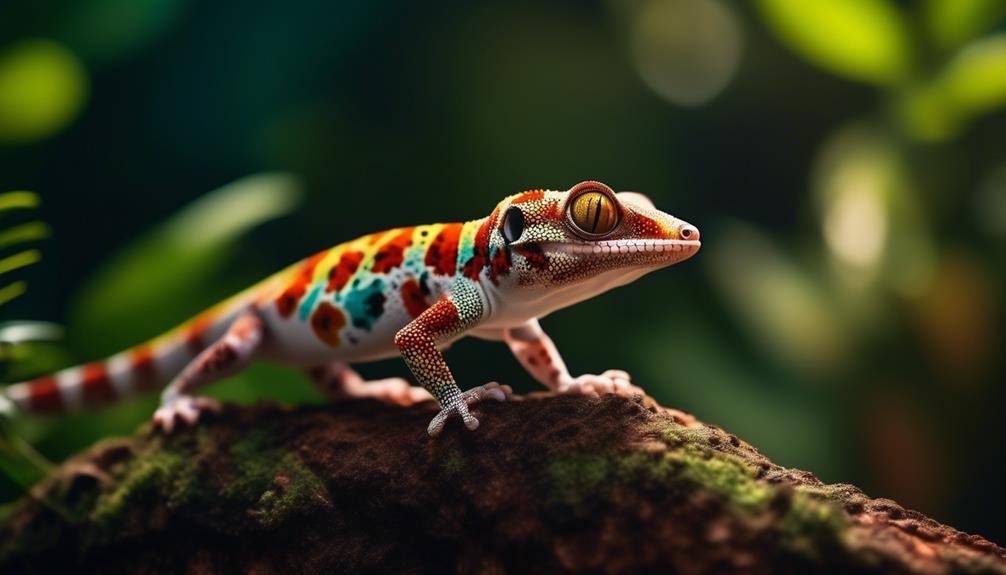
Due to the unique biodiversity found on the island, Madagascar is home to a multitude of endemic species. These are species that are found nowhere else in the world and have evolved in isolation on the island for millions of years.
Some of the most well-known endemic species of Madagascar include the lemur, a group of primates found only on the island, and the baobab tree, known for its distinctive appearance.
The island’s isolation and diverse habitats have allowed for the evolution of a wide range of unique plants and animals, making Madagascar a hotspot for biodiversity.
However, many of these endemic species are facing threats such as habitat loss and climate change, highlighting the need for conservation efforts to protect their future survival.
Threats to the Gecko’s Habitat
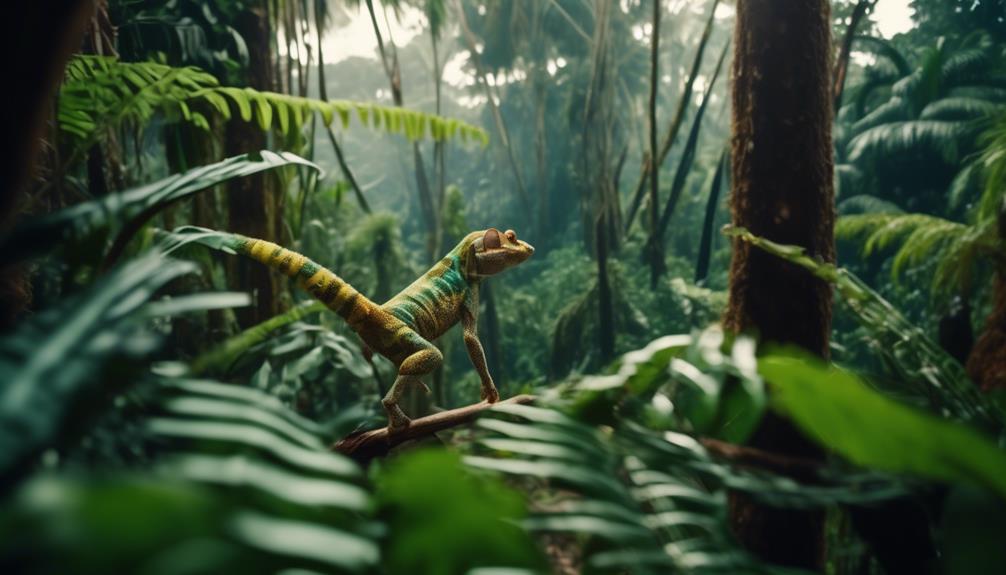
Habitat degradation and deforestation pose significant threats to the habitat of Mocquard’s Madagascar ground gecko. As an endemic species of Madagascar, the gecko relies on the dry deciduous forests and rocky areas for its survival.
However, these habitats are increasingly being destroyed and fragmented due to human activities such as logging, agriculture, and mining. Deforestation not only removes the gecko’s natural habitat but also disrupts the complex ecosystem it depends on. The loss of trees and vegetation reduces the gecko’s food sources and eliminates vital shelter and breeding sites.
Additionally, habitat degradation leads to increased vulnerability to predation and competition from invasive species. These threats, combined with the gecko’s limited range, make it particularly susceptible to extinction.
Urgent conservation efforts are needed to protect the remaining habitat and ensure the survival of Mocquard’s Madagascar ground gecko.
Deforestation and Its Impact
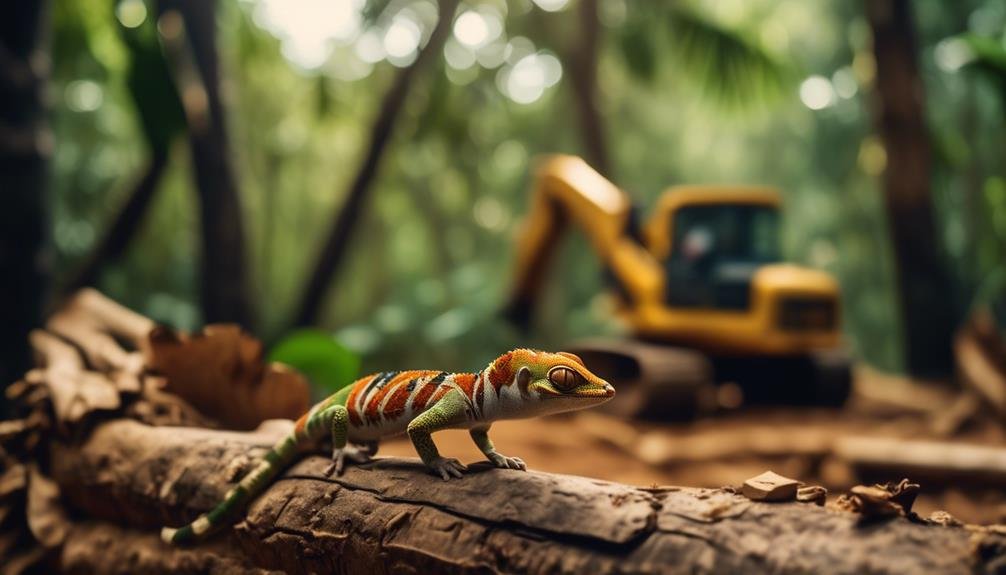
Deforestation, a major environmental issue, has profound and far-reaching impacts on various ecosystems and species worldwide. In the case of Mocquard’s Madagascar ground gecko, deforestation poses a significant threat to its habitat and long-term survival.
The impacts of deforestation on this species include:
- Loss of habitat: Deforestation results in the destruction of the gecko’s natural habitat, the dry deciduous forests of Madagascar. This loss of suitable habitat restricts the gecko’s ability to find food, shelter, and breeding sites.
- Fragmentation: Deforestation often leads to the fragmentation of forests, creating isolated patches of habitat. For a species like the ground gecko, which requires a relatively large home range, habitat fragmentation can limit their movement, gene flow, and overall population viability.
- Increased vulnerability to predators: With deforestation, the gecko’s natural predators may expand their range, increasing predation pressure on the species. The loss of vegetative cover also makes the gecko more exposed and vulnerable to predation.
Given these impacts, it is crucial to address deforestation and implement conservation measures to protect the habitats of Mocquard’s Madagascar ground gecko and other endangered species.
Importance of Protected Areas
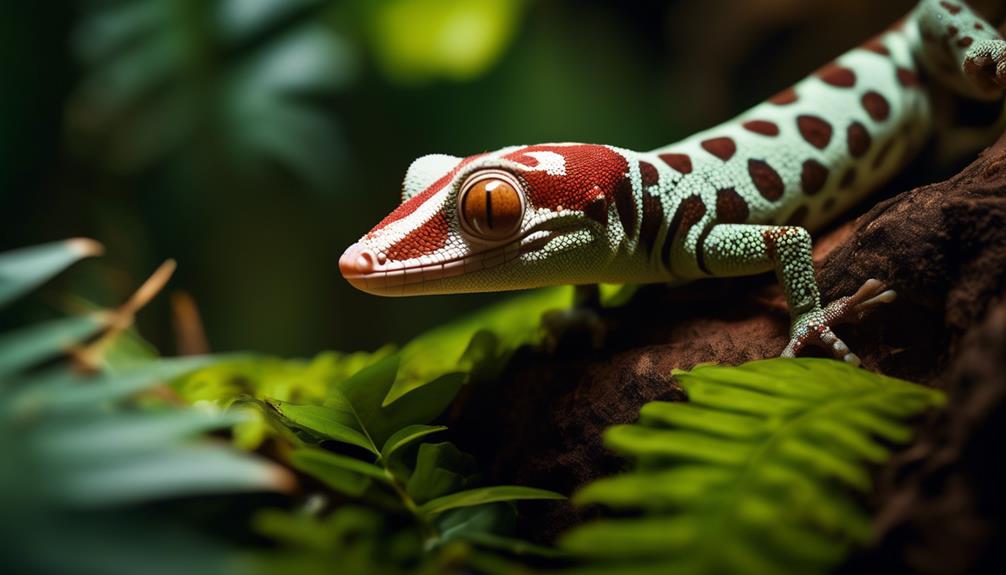
Protected areas play a vital role in safeguarding the habitats and populations of endangered species like Mocquard’s Madagascar ground gecko. These areas, such as national parks and reserves, provide a refuge for species that are at risk of extinction due to various threats, including habitat loss, climate change, and human activities.
By designating specific areas as protected, governments and conservation organizations can ensure that these habitats are preserved and managed in a way that benefits the species that depend on them. In the case of Mocquard’s Madagascar ground gecko, protected areas in Madagascar help to maintain the dry deciduous forests and rocky habitats that are crucial for its survival.
These areas also provide opportunities for research and monitoring to better understand the gecko’s population status and conservation needs. Without protected areas, the future of endangered species like Mocquard’s Madagascar ground gecko would be even more uncertain.
Research and Monitoring Efforts
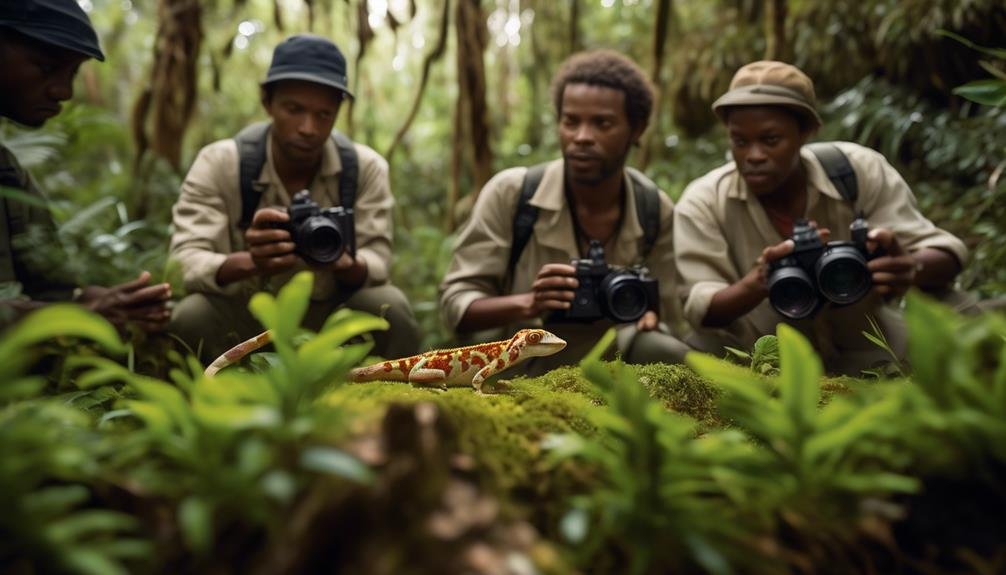
Research and monitoring efforts are crucial for gaining a comprehensive understanding of the population dynamics and conservation requirements of Mocquard’s Madagascar ground gecko. These efforts play a vital role in informing effective conservation strategies and ensuring the long-term survival of this species.
Population Assessment: Research and monitoring allow scientists to assess the size and distribution of Mocquard’s Madagascar ground gecko populations. This information is essential for identifying areas of high conservation priority and evaluating the impact of threats such as habitat loss and climate change.
Habitat Monitoring: Monitoring the gecko’s habitat is essential for understanding its ecological requirements and identifying any changes or degradation that may affect its survival. This includes assessing the quality of vegetation, availability of suitable microhabitats, and the impact of human activities in the gecko’s range.
Threat Identification: Research and monitoring efforts help identify and prioritize threats to the species, such as habitat loss, illegal collection for the pet trade, and climate change. This information is crucial for developing targeted conservation actions to mitigate these threats and ensure the gecko’s long-term survival.
Challenges for Long-Term Survival
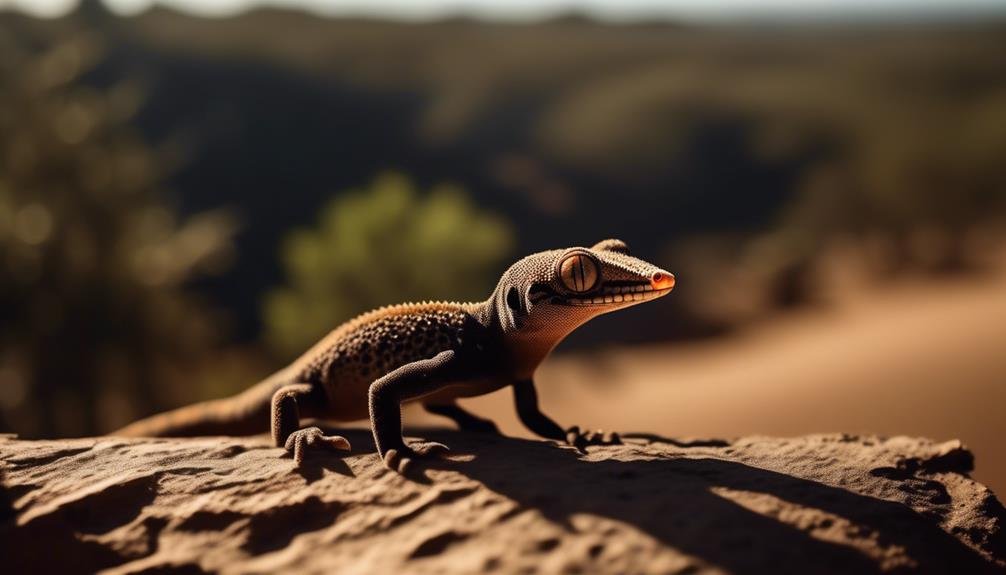
One of the key factors posing challenges for the long-term survival of Mocquard’s Madagascar ground gecko is the ongoing destruction of its natural habitat.
The gecko is primarily found in the western and southwestern regions of Madagascar, where it inhabits dry deciduous forests and rocky areas.
However, these habitats are being increasingly threatened by deforestation.
The clearing of land for agriculture, logging, and human settlements is reducing the available habitat for the gecko, limiting its ability to find food, shelter, and suitable breeding sites.
As a result, the population of Mocquard’s Madagascar ground gecko is declining, and its future remains uncertain.
Conservation efforts that focus on protecting and restoring its habitat are crucial for the long-term survival of this endangered species.
Conservation Strategies for the Gecko
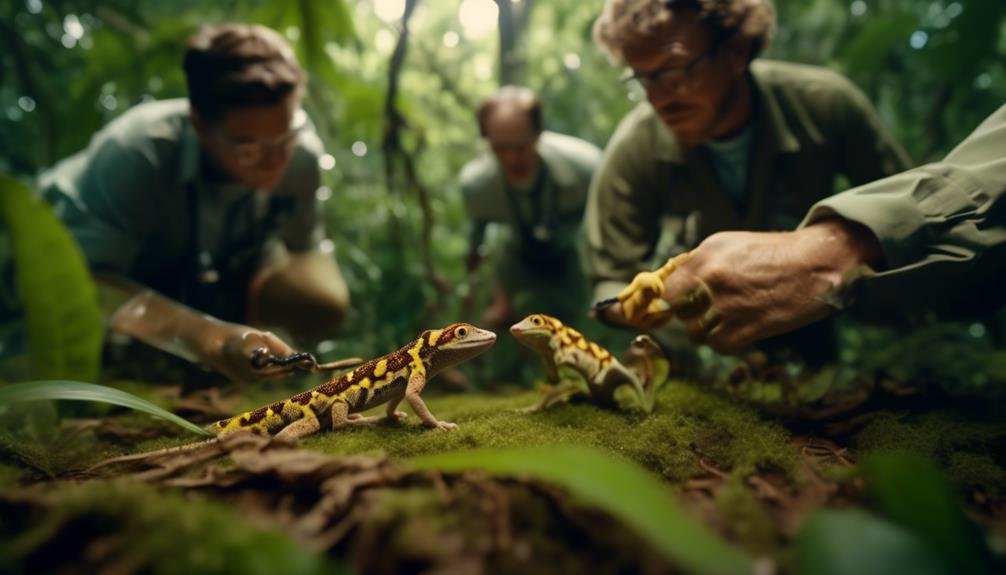
To ensure the long-term survival of Mocquard’s Madagascar ground gecko, effective conservation strategies must be implemented. These strategies should focus on habitat protection, reforestation efforts, and community engagement and education.
Habitat protection is crucial for the gecko’s survival. Establishing and expanding protected areas, such as national parks and reserves, can safeguard the gecko’s remaining habitat from further degradation or destruction.
Reforestation efforts are also important. Restoring and replanting native vegetation in areas that have been cleared or degraded can provide essential habitat for the gecko and other species.
In addition, community engagement and education play a vital role. Involving local communities in conservation initiatives and raising awareness about the importance of protecting the gecko and its habitat can promote sustainable land use practices.
Role of Local Communities in Conservation
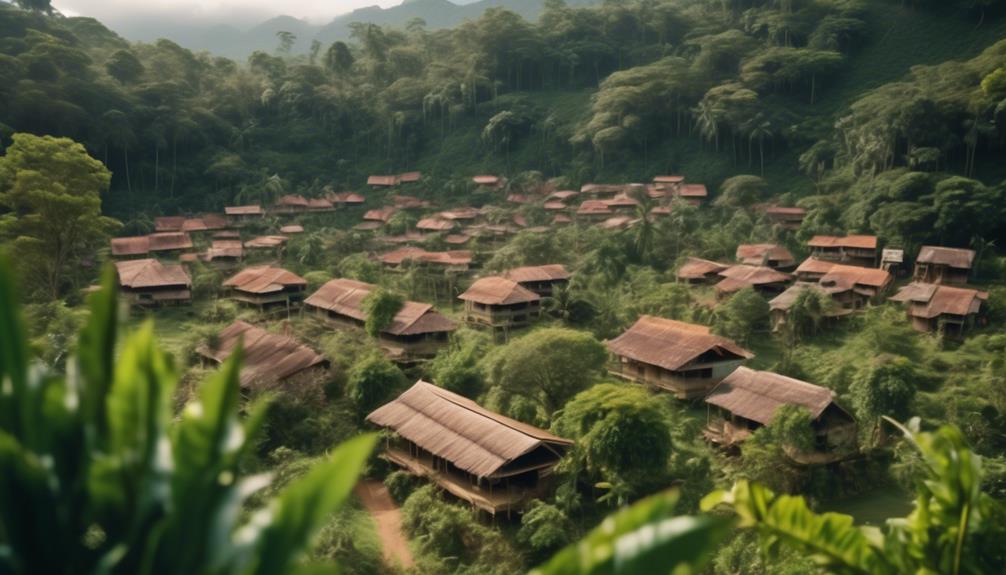
Local communities play a vital role in the conservation of Mocquard’s Madagascar ground gecko. They actively engage in efforts to protect its habitat and promote sustainable land use practices. These communities are directly affected by the presence of the gecko in their local ecosystems and understand the importance of its conservation.
They actively participate in initiatives such as reforestation projects, habitat restoration, and conservation education programs. These activities help to create suitable habitats for the gecko and raise awareness about its conservation needs.
In addition to habitat protection, local communities also work towards sustainable land use practices. They implement responsible farming techniques and take steps to reduce deforestation. These practices help to minimize the negative impacts on the gecko’s habitat and ensure the long-term sustainability of the local ecosystems.
By involving local communities in conservation efforts, there is a greater chance of long-term success in protecting the habitat of Mocquard’s Madagascar ground gecko. Their knowledge, commitment, and involvement are crucial in preserving this endangered species and its fragile ecosystem.
International Collaboration for Protection
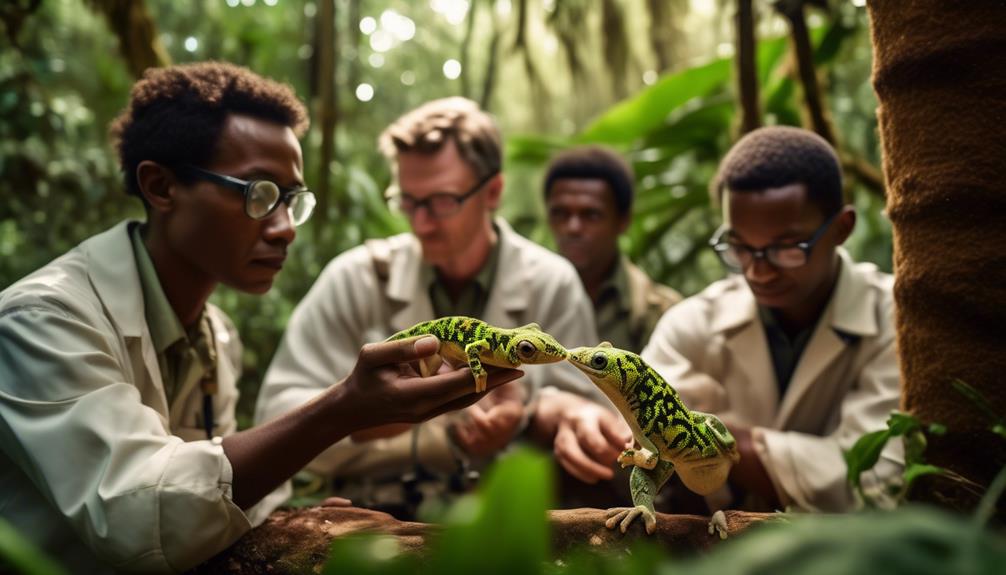
The conservation efforts for Mocquard’s Madagascar ground gecko extend beyond local communities, with international collaboration playing a crucial role in its protection. This collaboration involves various organizations, researchers, and government agencies from around the world working together to safeguard the species and its habitat.
- Sharing knowledge and expertise: International collaboration allows for the exchange of valuable information and expertise between different countries and institutions. This helps in better understanding the gecko’s biology, behavior, and habitat requirements, which can inform conservation strategies and management plans.
- Funding and resources: International collaboration often brings financial support and resources to conservation projects. This can include funding for research, habitat restoration, and community engagement initiatives, which are essential for effective conservation.
- Policy and advocacy: Collaborative efforts at an international level can help influence policy decisions and advocate for the protection of the gecko and its habitat. By working together, stakeholders can raise awareness, promote conservation policies, and advocate for stronger regulations to mitigate threats to the species.
International collaboration is crucial for the long-term survival of Mocquard’s Madagascar ground gecko, as it allows for a coordinated and holistic approach to its protection. By pooling resources, knowledge, and efforts, stakeholders can maximize their impact and ensure a sustainable future for this endangered species.
Hope for the Future of the Gecko
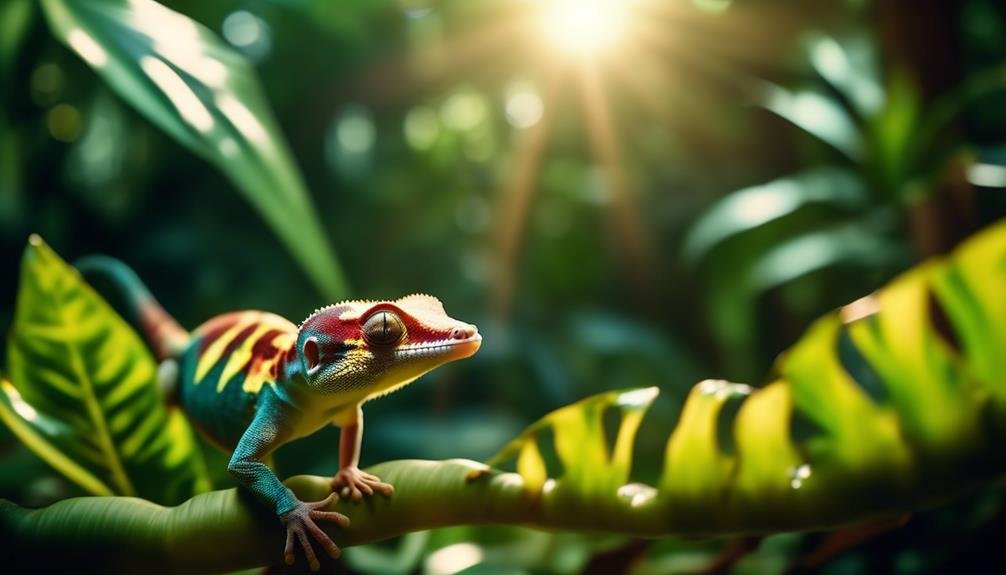
Collaborative efforts and conservation initiatives provide a promising outlook for the future of Mocquard’s Madagascar ground gecko. While the species is currently listed as “Least Concern” on the IUCN Red List, its long-term survival is at risk due to habitat loss caused by deforestation. However, there is hope for the gecko’s future through various conservation actions.
One such initiative is the establishment of protected areas, such as national parks and reserves, where the gecko is safeguarded. Additionally, international collaborations involving researchers, conservation organizations, and local communities are working together to study and monitor the population status of the gecko. This collective effort enables a better understanding of the species’ conservation needs and aids in the development of effective conservation strategies. By raising awareness, promoting sustainable practices, and implementing conservation measures, there is a chance to secure a brighter future for Mocquard’s Madagascar ground gecko.
| Conservation Initiatives | Benefits for the Gecko | Collaborators Involved |
|---|---|---|
| Establishment of protected areas | Provides a safe habitat for the gecko | Government agencies |
| Research and monitoring | Better understanding of population status | Research institutions |
| Awareness campaigns | Promotes conservation and sustainable practices | Conservation organizations |
| Implementation of conservation measures | Protects the gecko from threats | Local communities |
| International collaborations | Facilitates knowledge sharing and effective strategies | Scientists, NGOs, local authorities |
Frequently Asked Questions
How Does Mocquard’s Madagascar Ground Gecko Reproduce?
Mocquard’s Madagascar ground gecko reproduces through sexual reproduction. Mating occurs between a male and a female gecko, with the female laying eggs after fertilization. The eggs are then incubated until they hatch, resulting in the birth of live young.
Are There Any Other Species of Geckos Found in Madagascar?
Madagascar is home to numerous gecko species, including Paroedura pictus, Paroedura stumpffi, and Uroplatus fimbriatus. These geckos exhibit diverse adaptations and can be found in various habitats across the island, contributing to its rich biodiversity.
What Is the Average Lifespan of Mocquard’s Madagascar Ground Gecko?
The average lifespan of Mocquard’s Madagascar ground gecko (Paroedura mocquardi) is currently unknown. Further research is needed to determine the longevity of this species and its potential impact on its conservation status.
How Does the Gecko Use Its Adhesive Toe Pads?
The Mocquard’s Madagascar ground gecko uses its adhesive toe pads to climb on various surfaces. These pads allow the gecko to grip onto different substrates, enabling it to navigate its habitat and access food sources.
How Do Local Communities in Madagascar Contribute to the Conservation of Mocquard’s Madagascar Ground Gecko?
Local communities in Madagascar contribute to the conservation of Mocquard’s Madagascar ground gecko through their involvement in community-based conservation initiatives, such as habitat restoration, raising awareness, and promoting sustainable practices that minimize the impact on the gecko’s habitat.
How Can I Help Conserve the Endangered Gecko Species in Madagascar’s Forests?
If you’re wondering how to help conserve the endangered gecko species in Madagascar’s forests, consider supporting conservation organizations working on the ground. By supporting these initiatives, you can make a significant impact on caring for Chinese cave geckos and other endangered species in their natural habitat.
Conclusion
In conclusion, the Mocquard’s Madagascar ground gecko, a fascinating and diverse reptile endemic to Madagascar, faces an uncertain future due to habitat loss caused by deforestation.
While currently listed as ‘Least Concern’ on the IUCN Red List, further research and monitoring are necessary to fully understand its population status and conservation needs.
Conservation strategies, including the involvement of local communities and international collaboration, are crucial to protect the natural habitat of this endangered gecko and ensure its survival for future generations.

